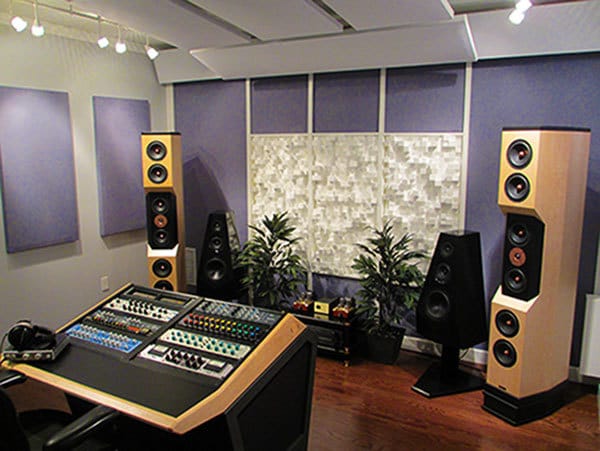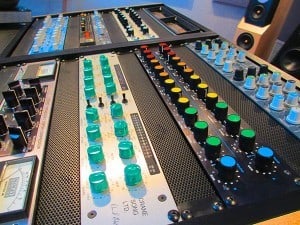Mastering music is something of a misunderstood art form by many, yet it is often the crucial step between the somewhat rough sound of the mix you devise in your home studio (or, indeed, your bedroom) and the distribution ready, final sound you desire. But another thing often misunderstood is how you should prepare your mix to send to a mastering engineer. Here we present 10 tips to prepare a mix for mastering to ensure you get the best and most professional results possible.
1. Make the best possible mix
It sounds obvious – and it should be! But all too often, recording engineers (from amateurs to even some “professionals”) just slap a mix together, seemingly with the mindset that “mastering will fix it.” This tip is somewhat intertwined with the rest of the tips on this list – but the most important thing to remember is that a good master starts with a good mix. As we’ll soon discuss – mastering does offer some “fixes,” but it also can bring out the bad in a mix. So be sure to provide your mastering engineer with the best mix possible.
2. Submit The Highest Resolution Audio Files You Have
You’ll want to submit audio files in the same resolution you recorded them, and generally speaking you will want this to be a 24-bit WAV or AIF files. While mastering engineers can work with lossy files like MP3 and AAC, some of the audio information in these files will have been lost resulting in a less effective master. It should also be noted that if you are submitting your work on CD you should be sure to use a data CD with WAV or AIF files, as audio CDs will convert the songs to 16 bit.
3. Remove any Dithering
This should be mentioned in the same breath as submitting the highest resolution audio you have – remove all dithering from the master track, including from plug-ins that apply it automatically. Dithering will be added by the mastering engineer to best suit each song.
4. Remove all EQ, Compression and Limiters from the Master Bus
While adding these effects to the master bus of a mix can make your mix sound better, these will make it extremely difficult for the mastering engineer to properly do his or her job. Instead of making the mix sound as good as it possibly can, he or she will be working around the effects that you have put on the master track.
See also: Free Mastering VST Plugins For Windows & Mac OS!The one exception to this is if you are using an effect on the master bus for a specific sound, in which case you should let the mastering engineer know so that he or she is not working to try to negate the effect you added during the mastering process.
5. Leave Sufficient Headroom in Each Track
It is fairly commonly known that our mix levels should be relatively low – with max levels between -3 dB and -6 dB. But many recording engineers don’t know that every track should be reduced to this maximum level, not just the master bus for the best mastering results.
6. Present a Dynamic Mix
To an extent, this goes along with the above tip about volume levels. While compression is a great tool to use on tracks in your mix, don’t compress your instruments so much that your song loses its dynamic. Mastering is likely to make an overly compressed mix even more lifeless, when the goal of mastering is to add life to the song.
7. Present a “Clean” Mix
This goes back to the above point about mastering bringing out any bad aspects of a mix. If you have background noise or slight mistakes that you’ve “buried” in the mix, these often will become much more prominent once your track is mastered. Therefore you’ll want to remove any unwanted noise, track by track, before having your song mastered.
8. Don’t add Fades or Spaces to the Beginning or End of the Final Mix
This is another job of the mastering engineer, however you should submit notes for special instructions (i.e. two songs that should have no space between them or a gradual fade out that begins 30 seconds before the song ends). It is also helpful to leave plenty of space at the beginning and end of the song so that engineer has plenty of room to create the best sounding fade. Around 5 seconds is an ideal amount.
9. Submit a Reference Song to Your Mastering Engineer
Mastering engineers reference songs all of the time to make sure the song they’re working on meets the correct commercial level for the genre of the music. But submitting your own reference of a sound you’d like your mix to achieve will give your mastering engineer even more information about how you want your music to sound. This is all part of building a relationship with your mastering engineer and opening the lines of communication, which is another great way to ensure you get the sound you want.
10. Reference Your Mix
Finally, much like submitting a mix to your mastering engineer, make sure you are referencing your mix with a song that has a similar sound to what you’re aiming for. It is important to reference your mix not just on your studio monitors, but also on a variety of stereos to get a better feel for how your mix plays on other audio systems.
To reiterate, the best masters come from the best mixes, and referencing your mix is a great step to making that happen. Combining this with the other nine steps on this list will lead to a great sounding master that will sound like it was recorded in a state-of-the-art studio as opposed to your bedroom.
About Sage Audio
Sage Audio is a mastering studio located on historic Music Row in Nashville, TN that provides professional quality CD mastering at affordable rates aimed at giving independent artists the same quality sound as those on major labels.
They also offer a free mastering preview for first time artists. This sample allows them to see exactly what their tracks will sound like after being professionally mastered.



